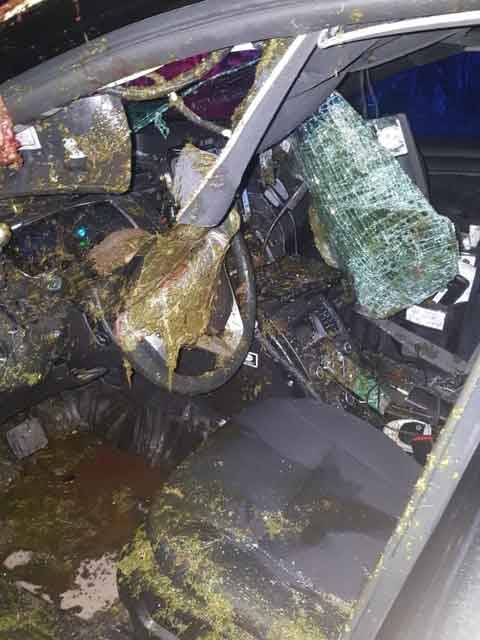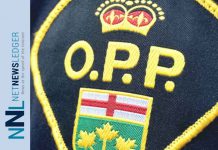THUNDER BAY – Travel on Northern Ontario roads can bring risks. An OPP Officer from Thunder Bay was very fortunate on May 29th, 2020.
While on patrol on Highway 17 near Shabaqua, at 11:25 pm, the officer’s cruiser struck a moose which was on the highway.

The officer suffered, thankfully, only minor injuries that were treated at the Thunder Bay Regional Health Sciences Centre.
The OPP cruiser however was as the pictures demonstrate, seriously damaged.
The OPP wish to remind motorists that moose are motor active on Northwest Region roads this time of year.
The Wildlife Collision Prevention Program offers some added information:
Collisions with moose pose a significant risk of injury or death to motorists and passengers for the following reasons:
- Mature bull moose can weigh 450 to 500 kgs (1000 to 1100 lbs) and stand nearly 2 metres tall at the shoulder.
- Moose stand higher than the hood of most cars. In a collision, the legs of the moose are knocked out from underneath the animal and the large heavy body tends to slide up over the hood and crash down either onto the windshield or on to the top of the car, crushing the passenger compartment. The entire roof of a car can sometimes be removed by the force of such a collision.
- Moose are difficult to see at night. They are so tall that their eyes are often above the headlight beam of most cars, and therefore the eyes do not reflect vehicle headlight beams like other animals. Also, their coat is very dark and it blends into the dark surroundings.








